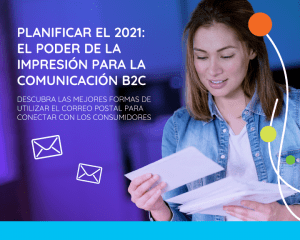
In this way, Covid-19 has brought a critical situation to many companies -for example, the hotel and catering or tourism industries-, and has brought to the table a pending or half-developed issue in many others: digital transformation. Those that had started down this path have experienced greater benefits over the competition.
Many companies had already started their digital transformation before the pandemic. For example, today we can take out an insurance policy or open a bank account without having to go to a branch office. In this new digital context, many of the traditional printed postal communications that companies used to send to their customers have been greatly reduced. Let’s think, for example, about the sending of conditions and contracts. However, despite the speed and cost savings of these communications, many customers are experiencing what could be termed “digital fatigue”. Personalization of digital communications is not enough. The customer wants something more, something that only the “tactile nature” of printed mail can provide, quality communication on paper.
As has been demonstrated, it is not a matter of choosing one channel or another, but of choosing the best channel for each customer and for each touchpoint of the customer journey. For example, digital communications would be suitable for transmitting fast messages. The objective or ideal use of one type of communication or another requires the corresponding departments, such as marketing and/or communication, identify those points in the journey where printing can lead to better results and a greater impact on the customer and the bottom line. It would also be necessary for postal mail to be part of an omnichannel strategy and a modern centralized hub. Such a strategy will have to ensure a consistent look and feel regardless of the channel, as well as provide a quality experience regardless of the channel. Companies that achieve this will have a valuable opportunity to differentiate themselves from the competition.
Quadient and Aspire have analyzed this situation to help companies improve their position with respect to printed communications in this context of accelerated digitization. In the
following whitepaper
prepared by Quadient, you will learn the four main tips that companies that want to take advantage of a blended communications strategy – emphasizing in this case the need to keep an eye on the print channel – should take in order to succeed in their B2C business. Quadient and Aspire believe that organizations need to implement four recommendations: print smarter for greater impact, use the most appropriate channel for each job, modernize their technology infrastructure and ensure agility, improve profitability and eliminate risk.
E-Book
Planning for 2021: the power of print for B2C communication
In a context of strong changes within the company, centralized in a necessary and demanding digital transformation process, it is important not to lose sight of the advantages of channels such as postal mail, to create more efficient campaigns that generate a greater impact on your customers. Download this Quadient whitepaper to learn about the benefits of using print communications in your omnichannel strategy, as well as the requirements and key challenges of using print mail for multichannel integration.
